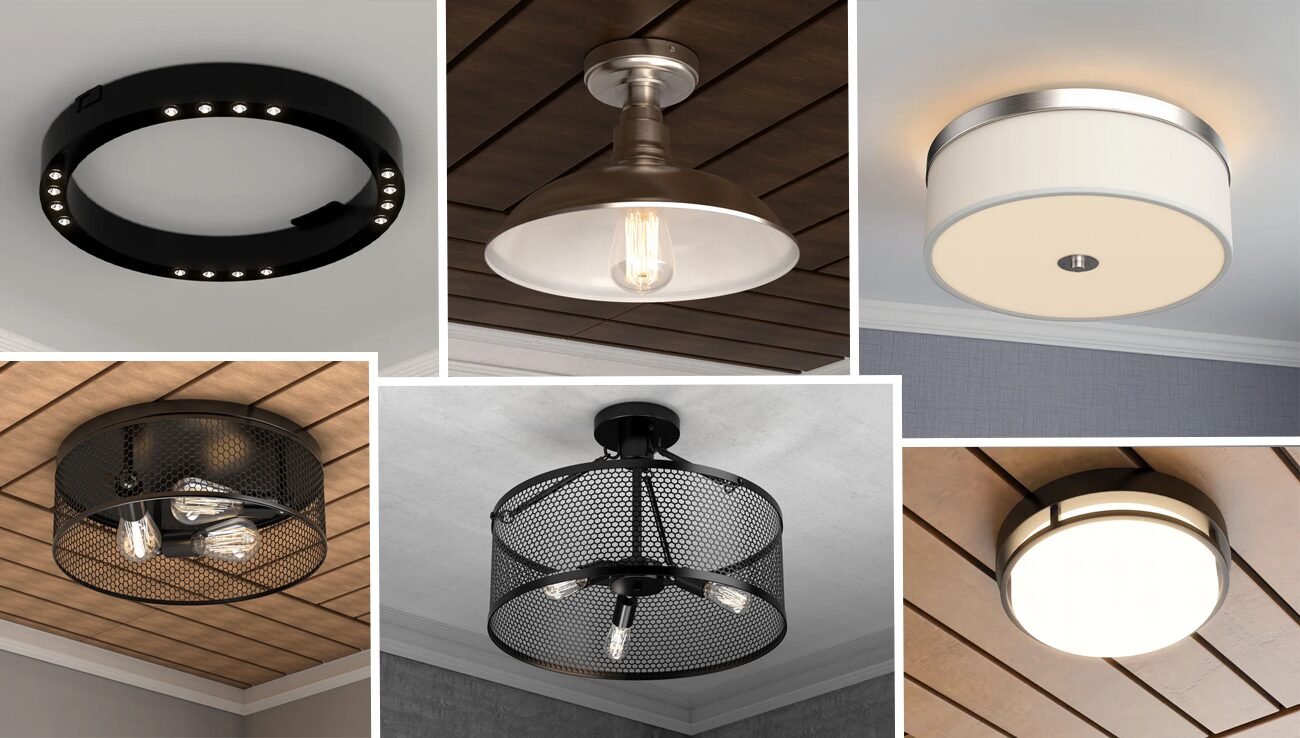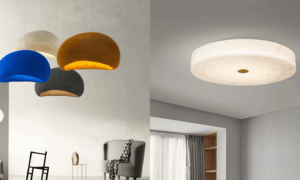Choosing the right ceiling fixture can transform a room’s appearance, enhance its function, and express your personal style. Among the most popular lighting options for modern homes are pendant lights and flush mount lights. Though they both provide overhead lighting, they serve different purposes and suit different types of spaces.
If you’re debating between pendant lights and flush mount lights, this guide will help you understand their differences and how to use each effectively.
What Are Pendant Lights?
Pendant lights are suspended from the ceiling by cords, rods, or chains. They often feature a single light bulb, though multi-light pendants are also popular. Their hanging design makes them perfect for task lighting, mood lighting, or creating a design focal point.
Key Advantages:
- Versatile Design: From vintage glass to ultra-modern metal, pendants come in a variety of styles.
- Focused Lighting: Ideal for illuminating kitchen islands, dining tables, or workspaces.
- Stylish Groupings: Can be installed in multiples for dramatic or symmetrical effects.
Pendants add visual interest and are best in rooms with standard to high ceilings.
What Are Flush Mount Lights?
Flush mount lights are installed directly against the ceiling without any gap. They are a compact, practical solution for providing general light, especially in smaller or lower-ceilinged spaces.
Benefits of Flush Mount Lights:
- Space-Saving: Perfect for ceilings under 8 feet.
- Low Profile: Clean, simple design that blends into the ceiling.
- Even Illumination: Great for ambient lighting in bathrooms, hallways, bedrooms, and closets.
Flush mounts are functional, subtle, and ideal for rooms where larger fixtures would feel intrusive.
Pendant vs. Flush Mount: Which One to Choose?
- Ceiling Height:
- Use flush mount lights in low-ceiling areas (below 8 feet).
- Use pendant lights in spaces with more clearance, ideally 9 feet or higher.
- Room Function:
- Pendant lights are ideal for focused lighting—like over a dining table, island, or reading area.
- Flush mounts work best for general lighting in transitional or utility spaces.
- Design Statement:
- Want a bold, decorative fixture? Choose a pendant.
- Prefer something understated and functional? Go for a flush mount.
- Maintenance and Cleaning:
Flush mounts are easier to clean and maintain, especially in high-traffic areas.
Using Both in the Same Home
A modern lighting strategy often involves layering multiple fixture types throughout a home. Pendant lights and flush mount lights can complement each other beautifully when used in the right spaces.
Examples:
- Kitchen: Use flush mount lights for general lighting and pendant lights over the island or bar.
- Bedroom: Flush mount light for overall brightness, with pendants replacing bedside table lamps for a sleek look.
- Entryway: A flush mount keeps things simple near the door, while pendants can add style further inside.
Design Tips
- Match Materials and Colors: Keep finishes consistent across fixtures for a cohesive aesthetic.
- Mind the Scale: Don’t let a large pendant overpower a small room. Likewise, avoid underwhelming flush mounts in larger spaces.
- Use Dimmers: Both pendant and flush mount lights benefit from dimmer switches for adjustable mood lighting.
Final Thoughts
Pendant lights and flush mount lights each bring something unique to your home. Pendants make a visual statement and provide focused lighting, while flush mounts offer efficient, space-saving brightness.
By considering your room’s size, ceiling height, and lighting needs, you can choose the fixture that fits best—or better yet, use both to create a balanced and stylish lighting plan throughout your space.






























